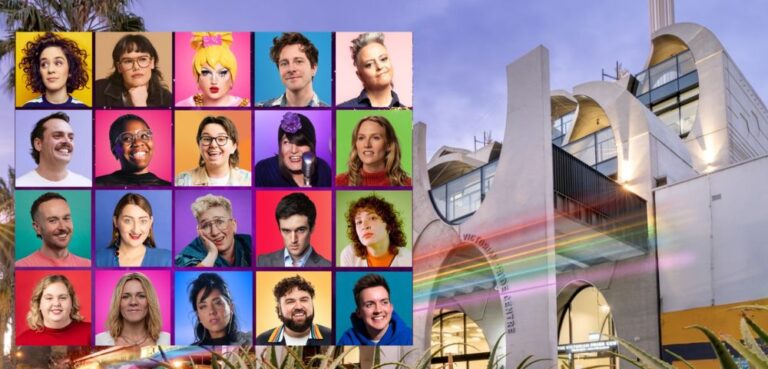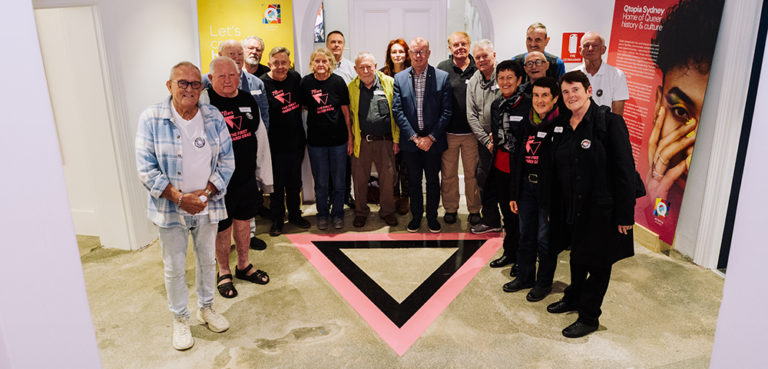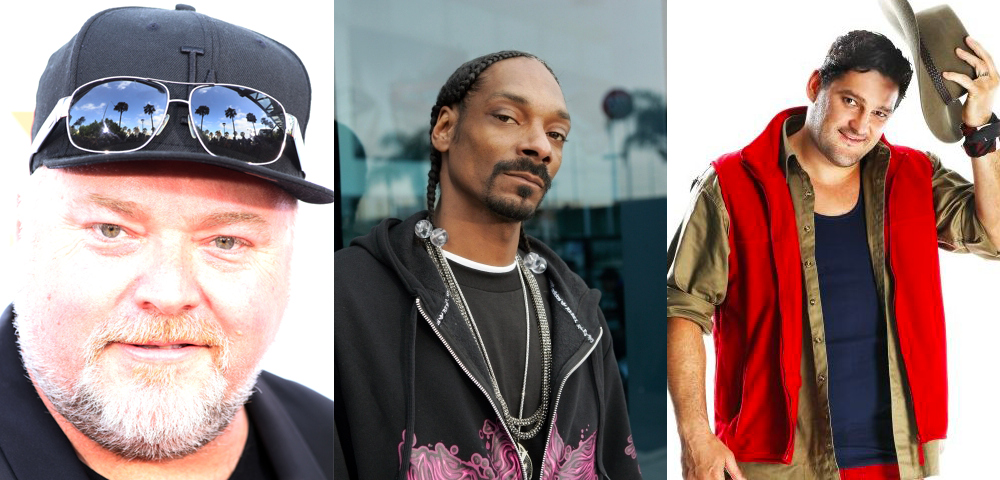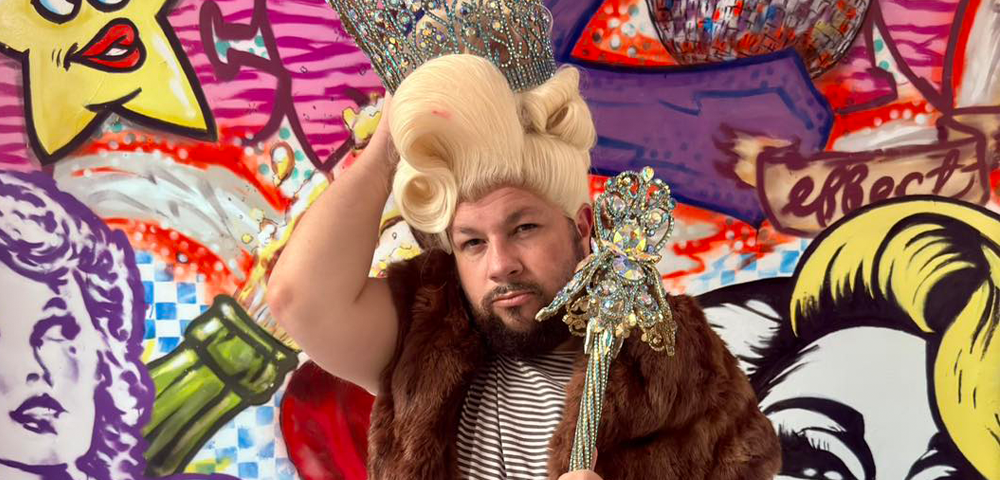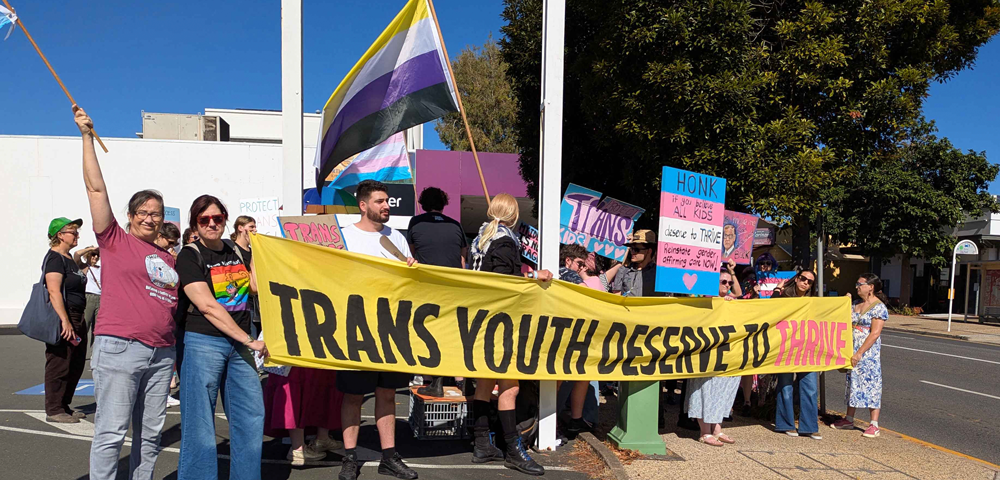
Andrew Delaney Brings Frankenstein To Life At Marc Wasiak Foundation Fellowship Exhibition

In 2021 the Melbourne art scene lost a friend, longtime collaborator and visionary of the multidisciplinary arts, Marc Wasiak.
In his honour, and in recognition of the collaborative, supportive and immersive nature of his work, his community put together the Marc Wasiak Foundation.
This not-for-profit initiative awards $10,000 annually to an artist whose work is a “cross-pollinated creative practice” that is “disruptive, challenging and thought provoking while embracing beauty and aesthetics.”
The Star Observer sat down at the inaugural exhibition, FRANKENSTEIN: Life Death Life, with winner Andrew Delaney, who shared what winning this prestigious fellowship has meant to his creative process, and the multifaceted meanings behind his show.
It’s Alive: Bringing Frankenstein To Melbourne In 2025
In reworking a now 200+ year old Frankenstein; or, The Modern Prometheus, first published anonymously in 1818 by a 20-year-old Mary Shelley, Delaney pays homage to the author, while also acknowledging her influences and showcasing other iconic characters from the genre she founded. Delaney recognises the parallels many queer artists have found between Frankenstein and issues of identity and self-expression; “she couldn’t even put her name on it. And again, there is that, I don’t know, not being. Who you are.” In a way which mirrors the storytelling photography of Gerard & Marc’s lavish shoots, Delaney’s work tells a story of a play “from 1825, they had three performances and it was closed down because it was sacrilegious, and I think there’s been elements of that through its history that are actually quite true and very relevant today.” The costumes from this performance, set just four years after Shelley first put her name on the second edition of Frankenstein, have been languishing in storage, and now, in Delaney’s work, they come to life in rich but decaying textiles, using layers of manipulation, ageing and construction that tell the story of Lord Byron, Percy and Mary Shelley, and the modern Prometheus who has captured imaginations for 207 years. Delaney says that some of this lasting appeal comes from the mismatched perceptions of monstrousness that are still present today, “because you know who the real monster was. Or who wasn’t the real creature.”
The Marc Wasiak Foundation: A New Way Of Supporting The Arts
Like Wasiak himself, the foundation doesn’t do anything just because that’s the way it’s always been done, but has cut through a lot of the red tape and barriers that exclude artists from grants, fellowships and other opportunities, by simplifying the application process to just six questions and supporting photos, and operating without an application fee. Says Delaney, “I saw the foundation’s call out, and then the night before, I thought, fuck it!” Despite perhaps worrying that “it was more aimed at students and up-and-comers”, Delaney pushed those concerns aside. “I thought… What is an emerging artist? I mean every time you do an exhibition you emerge, and take it further!”
Foundation Chair and 30-year collaborator of Wasiak’s, Gerard O’Connor, says “I’d love to have given every single person the $10,000. I really would because… there was something about them applying for it that was very touching.” That love, openness and generosity is at the core of the foundation’s ethos, and with every year the processes will develop and grow to best serve the artists and their work. Of the process, Delaney says “The questions were really good and made you relax… … From the very beginning to the end, it’s just been really, really straightforward, and it’s been collaborative, and you guys have kind of asked me the right questions at the right time.”
For members of the foundation, this inaugural exhibition is, naturally, bittersweet, evoking the creative spirit of its namesake. But at the same time, “it’s been great to have a showcase for the foundation – such exceptional work that marries the ideals of the foundation.” The works may look very different to anything Gerard & Marc produced, but they speak the same language – of cross-disciplinary work, of community, collaboration, generosity and bold visions brought to life in nothing but full, glorious colour. O’Connor says that fellow judge Karen Webster “was the one that first of all came up with this idea. To sort of help me…to move forward in some ways and so it’s been nothing but a joy really to work with Andrew and see this amazing work. It’s got a like-minded spirit.”
From The Classics To The Fear Of The 80’s
Delaney’s references aren’t just about Mary Shelley, who is present as the “muse with the quill and Shelley’s heart in her hand”, but also “ Jekyll and Hyde and the Hunchback… and even Hellraiser.” All watched over by the languid face of Lord Byron, and the disembodied nightshirt of Percy Shelley, and even figures springing from modern references “the hooded guy, Death, commercials from the 80s”.When asked what keeps people coming back to the gothic classics, Delaney, who has been working on this project for more than five years in various iterations, speaks to the eternal nature of this modern Prometheus, “It’s dark and it’s romantic and you can read things into it and you go as deep as you like into it.” Frankenstein’s Monster has also been reworked various times by queer artists, seeing in the remaking of oneself a universal story of rebirth. “I know the gay community is great in finding whether it’s humor or whether it’s campery or whether it’s glamour, they will find it if it’s there – whether it’s on the street or whether it’s in a pile of trash. They’re so used to transforming dark things into fabulous things. I almost thought it was very timely to do it again now.” “It’s about seeing beauty in the other which is an old thing which seems very relevant in the world at the moment”
The Monster Remade: Found Objects, Discarded Materials And A Network Of Op-Shop Ladies
Having worked for some of the largest retailers in Melbourne, Delaney can clearly make something with anything, but his work here revels in the challenges and discoveries that come from reworking and repurposing materials others wouldn’t give a second glance. These materials include a decommissioned shop awning, covered in dried lichen, which Delaney had to cut off the supports and carefully construct into a meticulously tailored suit jacket. Far from the traditional idea of a tailor in a three-piece suit, ”I had to sew the lichen jacket in my underpants because everything just kept grabbing onto the lichen… so I had to sit there in my knickers and sew this thing…working out how you’re gonna do it and turn it inside out when it was stiff as a board, those sorts of challenges which I kind of like. There’s a kind of reaction and a give-and-take with the material.” Delaney’s suppliers include friends, the family farm, and a brigade of ladies in op shops “I do get texts. ‘Get here now’…and people do donate baby bonnets and stuff to you and people do see what you’re doing and kind of get it and that’s really sweet for me.” It’s this ethos of collaboration and accepting help and support that is another reflection of Marc’s legacy, as O’Connor shares “it’s like when Marc and me would do group scenes… …we do call outs and people come and… …they’ve done a bit of acting or a bit of modelling or making a bit of clothes but they have other lives… (and) they jump at the opportunity to be involved or to help or participate in something and that’s fantastic.”
Looking Towards The Future
Off the back of this fellowship and exhibition, Delaney plans to extend the work and re-exhibit in the future, utilising his back-catalogue of works from a career spanning almost four decades in visual merchandising (VM), styling, photography and painting. “All the knowledge and things and I’ve come about it sort of from the other side coming through retail and VM and props and event work and paint finishes and bit of fashion styling” As well as breathing life into a 200+ year old story, Delaney keeps traditional skills alive through his work. “When I was doing event work and stuff, a lot of our guys were stunning painters…and I got to art direct a lot of that stuff. So I kind of pull paint techniques and finishes and stuff like that, from those guys… I’m a sponge when it comes to a lot of that older stuff and the shadow play and pop-up, two-dimensional things.” “I try and utilise as many skills as I can and underplay them so they all seem natural and part of it. But it’s certainly a lot of technical skills that I’ve learned from those people that are in this.” The fellowship has also given Delaney freedom from making the work through any kind of commercial lens; “it took just so much of that stress that impacts on what you do…you want to sell stuff, and then none of this is for sale. So (it) alleviates all that… clearing the creative pathway for you to concentrate on the important things.” Although of course “there’s still a fair bit of two-minute noodles and stuff going on, but that’s the sacrifice that any artist will gladly make, but that that clear pathway allows you to know that there is there is a home for the work you are making and you aren’t constrained by that”
FRANKENSTEIN: Life Death Life by Andrew Delaney is free to view, and runs from 23 June–18 July 2025, 9am–5pm, Monday–Friday at The Gallery, LCI Melbourne. 150 Oxford Street, Collingwood.


